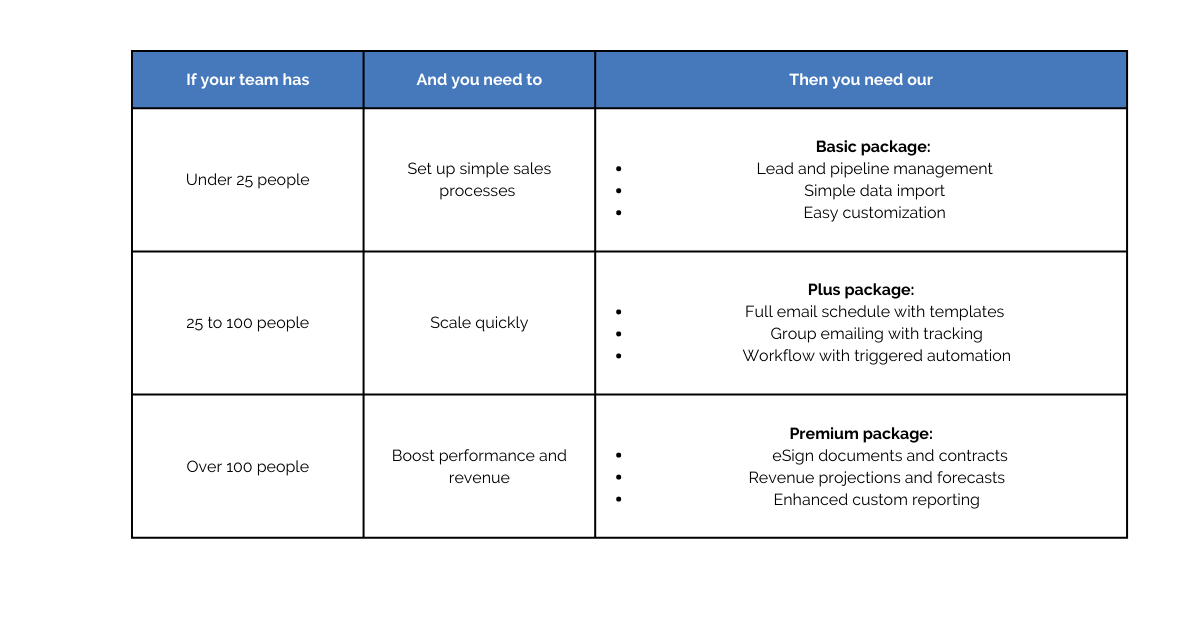How PIM Simplifies Localization
Global expansion used to mean setting up warehouses, shipping infrastructure, and regional partners. Today, it also means something more complex — localizing your digital experience...
Published: Apr 15, 2023 Updated: Sep 17, 2025
Tables often make it easier to present complex product information to customers. They break up intimidating large chunks of text, enabling users to review information in a manageable, logical order. However, managing complex tables in technical product catalogs requires an intimate understanding of the data and how it affects the overall presentation of your product catalog.
Although creating complex tables is overwhelming, you can make better decisions about your products and optimize their performance when the information is easier to review. So, how can you make managing complex tables in technical product catalogs easier? Automation with a PIM.
Complex product tables create a logical presentation to help reduce the text required to explain intricate product details. The tables use a series of rows and headers so viewers can digest the information quickly and easily. It also creates a visual break on product pages with robust and overwhelming information. As a result, your audience can draw quick conclusions based on a simplified presentation of relationships between features and functions that apply to them.
An excellent example of a complex table is the “if-then table.” It creates common scenarios that enable your customers to look for the situation closest to their circumstances to determine what product they need. It reduces the words required to explain product applications while putting features into the context of use. For example, if you sell various CRM software packages, a dumbed-down version of your if-then table might look something like this:

Complex tables get far more detailed than this. The idea is to focus on customer pain points, so they can find the product or package that suits them while also covering all features and uses. Although creating tables with endless columns and details is painful, automating the process makes managing them easier.
The typical process to create and manage complex product tables involves the following steps:
Understanding customers’ needs and wants provides the information needed to create a user-friendly table. Your table needs to identify pain points and answer questions. For example, for a CRM, chances are people want to work faster. Therefore, your table needs to quickly explain how your CRM increases efficiency and enables teams to complete everyday tasks more effectively. However, that’s just one element of the table.
You’ll need to create a “skeleton” of your table with a “tree” of product features. Your skeleton uses cells as the building blocks to plug in the features. Collecting and prioritizing user needs enables you to present them in a logical, easy-to-read manner. You can then start building your complex table by developing columns and headers to connect your cells. Your tree diagram enables you to systematize your product features and decide how to present them as simply as possible.
Programmers use what is called an “atomic approach” to design. They start with small components before assembling bigger ones. The same approach works best when creating your table mockup. The order you create your mockup starts with “particles” like fonts and progresses to larger “molecules” like cells and accessories. Function is more important than appearance, BUT appearance does contribute to readability, so always keep this in mind. Along with fonts, colors, and icons, your mockup works from the smallest elements to the largest:
As you work, you progress to larger components until you create the entire table mockup. You should consider each component’s possible states before you proceed, using Occam’s razor principle to keep things simple. Also known as the “law of parsimony,” if you create an instance that satisfies your needs, don’t get caught up creating other instances. There’s no point wasting time figuring out what a user might need when you’ve already created a version that you know they will need.
Accessibility ensures your table is easy to access for all users. Although this is an impossible task, you can follow accessibility principles keeping major design considerations in mind. Content unification and formatting require thinking beyond the elements and determining how people will use the table instead. By creating table elements that are consistent and compatible, you enable people of all different abilities to access the table without frustration or difficulty. For example, how can a visually impaired user understand the table without voice-processing every cell? How can they increase the page size without losing the entire layout? Are your clickable cell elements the right size to avoid click errors?
Constructing a complex table combines multiple elements to create a comprehensive overview of product information. Each cell required to build your table is much easier to populate using a PIM (product information management). A PIM enables you to structure your complex product tables in a way that customers can understand. You can craft the exact technical copy needed to convert a potential customer using AI and access all data from a centralized hub.
A PIM automates complex table creation, enabling you to both introduce new products and update existing ones. A PIM facilitates complex table development, empowering your customers to make quick purchasing decisions.


